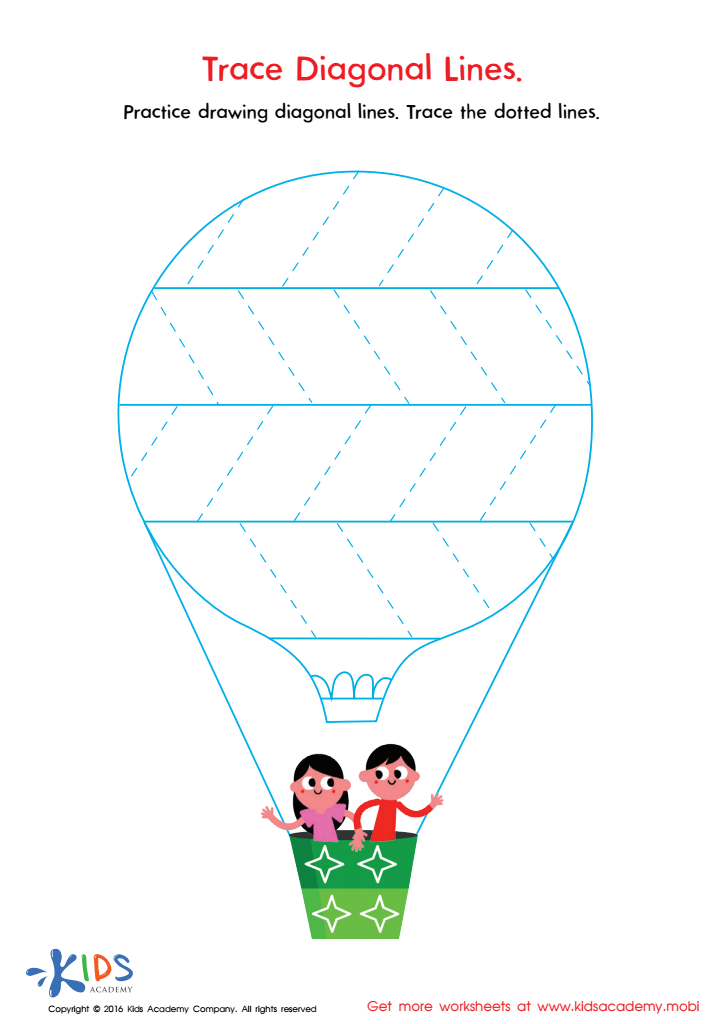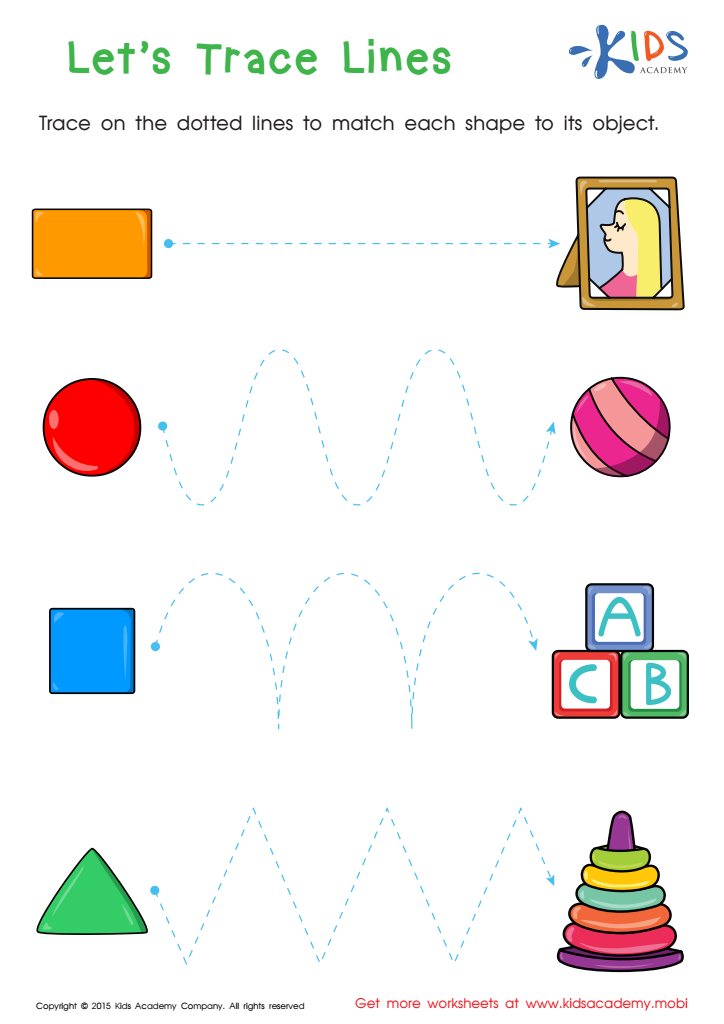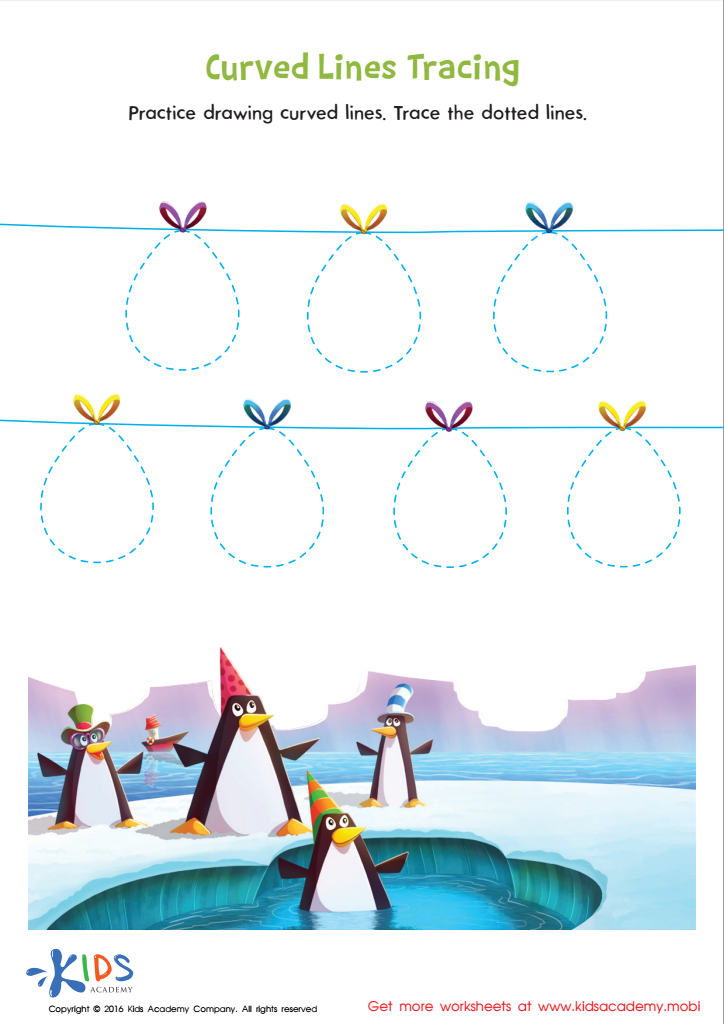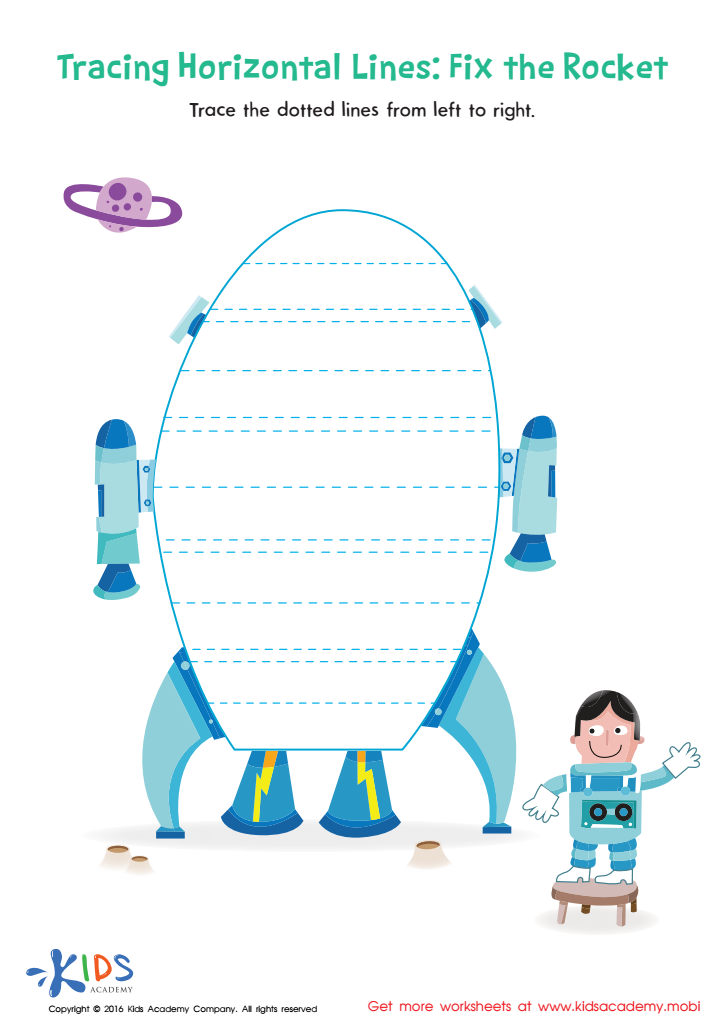Pre-writing skills Normal Tracing Lines and Curves Worksheets for Ages 5-6
4 filtered results
-
From - To
Enhance your child's pre-writing abilities with our "Pre-writing Skills: Normal Tracing Lines and Curves Worksheets" designed specifically for ages 5-6. These engaging and easy-to-follow worksheets help young learners develop essential fine motor skills, hand-eye coordination, and the foundational movements needed for writing. Through various tracing activities, children practice drawing lines, shapes, and curves, which are crucial for mastering letters and numbers. Carefully designed by education experts, these worksheets provide a fun, interactive way for kids to build confidence and prepare for more advanced handwriting tasks. Discover a joyful path to learning with our pre-writing skills worksheets.


Trace Diagonal Lines Worksheet


First Words: Let's Trace Lines Worksheet


Curved Lines Tracing Worksheet


Tracing Horizontal Lines Worksheet
Pre-writing skills are foundational abilities that young children need to develop before they can begin formal writing. For children ages 5-6, practicing normal tracing lines and curves is crucial for several reasons. Firstly, these activities enhance fine motor skills, allowing children to strengthen the small muscles in their hands and fingers necessary for gripping and controlling a pencil. This muscle strength is essential for forming letters and numbers correctly.
Additionally, tracing lines and curves helps children improve their hand-eye coordination. By following a path with their pencil, they learn to coordinate their vision with their hand movements, a skill vital for writing fluently. This practice also increases their spatial awareness and understanding of shapes, which are the building blocks of letter formation.
Moreover, early success in pre-writing skills builds confidence and encourages perseverance. When children find they can trace lines and curves with increasing accuracy, it boosts their self-esteem and motivates them to tackle more complex tasks. Finally, these activities cultivate attention to detail and focus by requiring children to concentrate on the task at hand, fostering patience and discipline.
In summary, pre-writing skills like tracing lines and curves lay a critical groundwork for future academic success by developing fine motor abilities, coordination, spatial understanding, and mental focus, making them essential for young learners.
 Assign to My Students
Assign to My Students
















